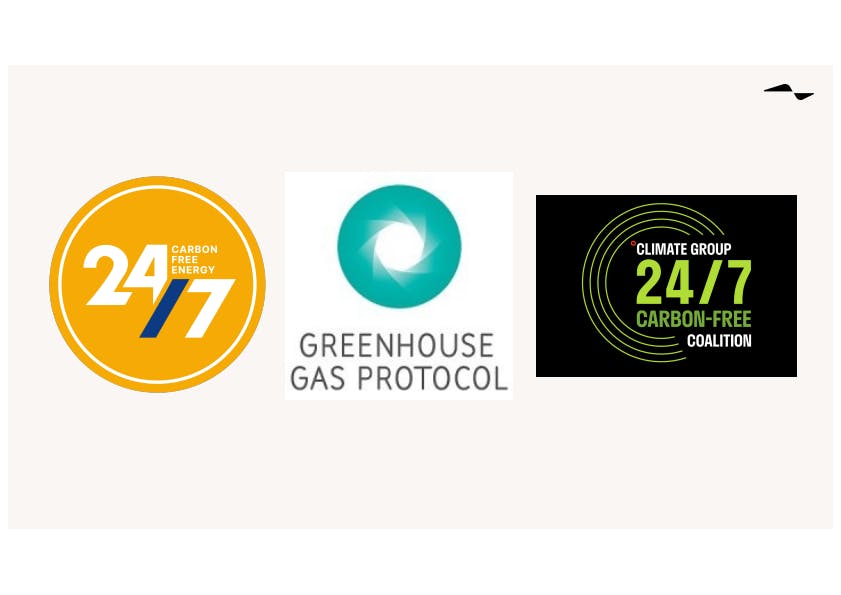Insight · 20 August 2025
The movements driving 24/7 carbon-free energy
From global compacts to granular certificates, the ecosystem shaping hourly carbon-free electricity is evolving fast. Granular Energy's Maartje van der Molen writes about the initiatives and standards that are critical to the evolution of hourly matching.

Starting a new role in Granular Energy’s Commercial team, I found myself swimming in different industry movements towards hourly matching, each representing a thread in a web of coalitions, compacts, and regulations that are reshaping how we define, procure, and account for renewable power. A few years ago, hourly matching was an aspiration to drive decarbonisation, but it is now a powerful movement gaining momentum across the energy sector.
The coalitions, compacts, and regulatory bodies I came across are rethinking the rules and shaping a future where every hour of electricity consumption is matched with carbon-free generation. In this post, I share the key players driving this transformation that I’d recommend to keep an eye on.
24/7 Carbon-Free Energy Compact
I’d like to start with the 24/7 Carbon-Free Energy Compact that was launched in September 2021 during the United Nations High-level Dialogue on Energy. It was co-initiated by UN-Energy, Sustainable Energy for All (SEforALL), and Google. This initiative brings together governments, companies, and organizations to commit to matching electricity consumption with carbon-free energy every hour of every day, everywhere.
This Compact functions as the vision layer. It sets a bold ambition, creates political momentum, and unites different actors under the same goal, but they don’t prescribe exactly how to get there.
GHG Protocol (Greenhouse Gas Protocol)
The most widely used international accounting and reporting standard for greenhouse gas emissions. GHG Protocol is currently in the process of updating its corporate suite of standards and guidance, including its Scope 2 Guidance for electricity emissions.
For companies, this is the rulebook layer: once temporal matching is recognised here (and it looks like it!), it will become the gold standard for credible claims about clean energy use.
24/7 Carbon-Free Coalition
Moving on to the 24/7 Carbon-Free Coalition. Run by the Climate Group, and targeting large energy buyers (founding members include Google, Vodafone, AstraZeneca), it works to advance the policies, market rules, and technologies that make hourly carbon-free energy procurement possible. It targets RE100 signatories, encouraging them to look beyond RE100 requirements towards hourly matching.
In June 2025, they released detailed technical guidelines for corporates covering how they can take steps towards a 24/7 carbon-free future: they cover timestamped certificates, storage accounting, and “shape preservation” of energy output. For me, this was the “implementation layer” in action; the ambition meets the practical realities of markets and metering.
EnergyTag
One of my biggest “aha” moments was realising that you can’t do hourly matching without the ability to prove exactly when clean energy was generated. EnergyTag is a non-profit defining the global standard for hourly matching done with granular certificates - timestamped proof of renewable generation, that build upon the existing energy attribute certificates.
They’re working with both the Compact and the Coalition to make sure the certificates used worldwide are consistent, credible, and compatible, and guide early adopters in how they implement granular certificates.
How it fits together
In my head, the structure looks like three concentric layers:
- Vision – The 24/7 Compact sets the global ambition.
- Implementation – The Coalition develops the market rules and tools.
- Accounting – The GHG Protocol defines how progress is measured.
Around this, groups like EnergyTag and local regulators provide the technical backbone and regional adaptations, and solution providers like us support the implementation and how to actually adopt these practices today.
Mapping out this ecosystem has helped me understand not just the direction of travel for the energy sector, but also where the real levers for change are. From high-level commitments to the technical work of timestamping every megawatt-hour, it’s clear that hourly matching is both a vision and a practical challenge. At Granular Energy, we’re working at the intersection of these layers - helping market participants turn ambition into measurable, verifiable action.
Share article